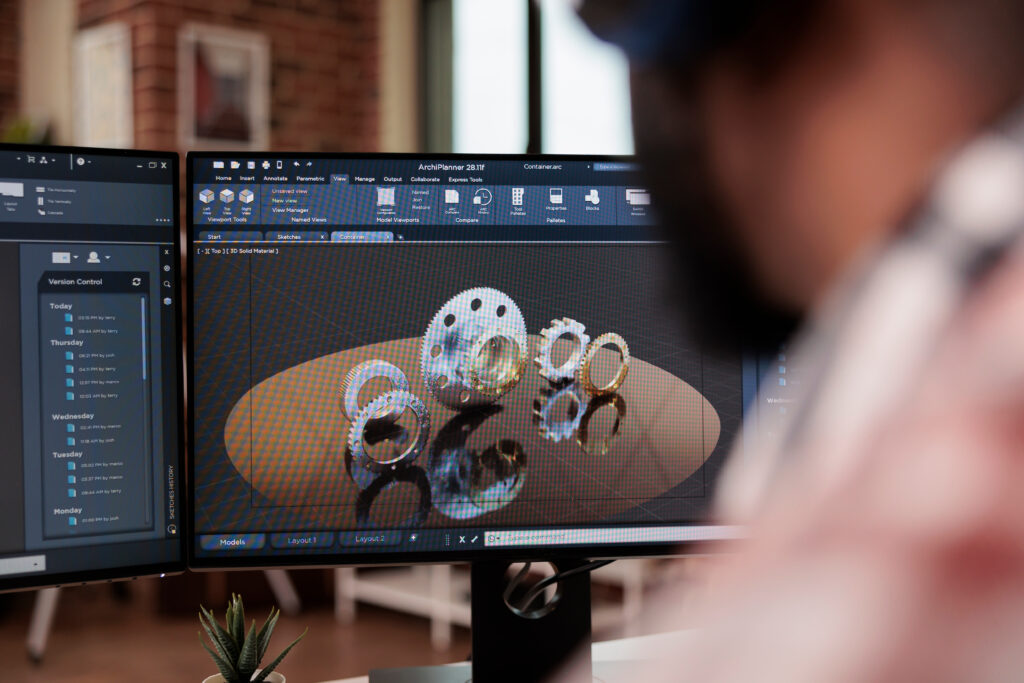RP pricing can include multiple services and customized processing. Prepare the budget by learning which factors impact the price of rapid prototyping. Use this guide to help reduce costs and streamline production without sacrificing quality.
RP pricing can vary widely depending on multiple factors. The price for rapid prototyping is based on several elements that can change anytime. You must learn the factors that affect RP pricing to get the best deal.
Manufacturers will attempt to satisfy client demands while elevating the industry standards. They might also suggest various processes to help enhance the outcomes. However, you hold the purse strings. RP pricing should reflect your efforts to achieve goals and reduce waste. It’s not always about the facility making money.
Rapid prototyping services are not one-size-fits-all. Some clients require straightforward models, while others need complex, functional representations with features to scale. Experts calculate RP pricing while considering your objectives. You have more control than you think.
Table of Contents
Seven Factors That Determine RP Pricing
#3. Prototype Processing Materials
#4. Prototype Surface Treating
How to Reduce Your Rapid Prototyping Bill
10 Questions to Ask About RP Pricing
Seven Factors That Determine RP Pricing
Determining RP pricing can be tricky, but a reliable manufacturer should explain the different aspects affecting your bill.
“One of the best things about rapid prototyping is its flexibility.”
You’re free to ask questions and adjust the trajectory without fudging the final results. Talk to your team for more details.
Getting a rapid prototyping price estimate is expected and wise. The engineering staff must determine the specifics before completing your order. If possible, send a 3D drawing of your product for a closer inspection. Consult your crew about adding processes or services to the invoice before launching the project.
Manage your budget with a comprehensive RP pricing guide to estimate your total. Then work with your manufacturer to develop a money-saving strategy. You’ll want to consider the primary factors that affect rapid prototyping costs. Start with these seven:
#1. Prototype Accuracy
Geometry and tolerances are essential when calculating PR pricing. However, your bid for precision is what impacts cost the most. The less intricate your prototype, the less expensive it will be. Choose the best RP manufacturers to develop accurate models at a lower price.
Some facilities cannot manage complex parts because of limited software or machinery. Others might refuse to handle complicated orders because of scheduling constraints or lacking talent. Check with the staff for particular restrictions, requirements, and other vital factors.
TIP: Develop a prototype with only the fundamentals to cut manufacturing costs without sacrificing quality.
#2. Prototype Design and Size
Your prototype structure is equally critical. Complicated designs are much more challenging to create, even for advanced manufacturers. Engineers must navigate multiple programs to deliver orders regardless of their dimensions. Large prototypes beg a higher price than small-batch projects with straightforward patterns.
Also, consider the appearance of your finished prototype. Understand that massive models and curved shapes can increase the price tag. ISO regulations could determine your project’s dimensions and design, so speak to your engineers for tips on keeping costs down.
TIP: Follow ISO standards for your industry to avoid costly mishaps and impractical plans.
#3. Prototype Processing Materials
Different materials come at different prices. For example, you can fulfill rapid prototyping orders using low-quality textiles or choose high-end materials. The stuff you choose will impact RP pricing and can also affect the processing possible for your design.
Plastic and aluminum are typically less expensive than hardened steel, titanium, or other durable alloys. However, you might be unable to adjust the required materials based on manufacturing ordinances for your industry. Save some of your rapid prototyping cash for this somewhat unpredictable factor.
TIP: Study material properties to help engineers choose the best textiles for your project.

We offer fast, high-quality, tailored PROTOTYPING solutions for leading companies in a wide range of industries.
superior Rapid PROTOTYPING
#4. Prototype Surface Treating
Surface treatment could be an essential step in your rapid prototyping process. It depends on your end-use objectives and industry standards. However, most finishing increases RP pricing because it’s an additional service not always necessary for some designs.
Meanwhile, hand processing can cost even more. Choose automated surface finishing to reduce your labor expenses, and then opt for manual post-processing during the final phase. Here are some of the standard options:
- Injection
- Silk Screening
- Laser Engraving
- Electroplating
Discuss the pros and cons with your crew to calculate the total cost of your RP services. Then multiply that figure by the required units to determine the overall price of your project. Adjust as needed to suit your budget.
TIP: Focus on function over fashion when developing your initial prototype designs.
#5. Lead Times
Monitor and manage lead times to enjoy more control over RP pricing. Rapid prototyping involves multiple steps that can require different timelines. Your lead time dictates the space between initiation and completion. Some facilities can handle orders in days, while others need weeks or months.
Lead times depend on several factors, so watch your competitor’s behavior. Stay ahead of the curve by planning ahead. You can lose sales or reduce brand awareness if you don’t act fast enough. Is the added cost of fast manufacturing worth retaining revenue and recognition? Only you can decide.
TIP: Ask for a comprehensive cost breakdown detailing how scheduling can change prices.
#6. Supply Chain Disruptions
The global supply chain is fickle, and today’s economy is feeling pressure. That means some manufacturers could charge higher prices for rapid prototyping materials. RP pricing depends heavily on the facility’s ability to procure appropriate textiles, technologies, and talent.
Shops that struggle to keep employees, frequently make mistakes, or compete in saturated industries can charge more for the same services. They insist that clients incur additional fees to compensate for their shortcomings. Supply chain issues aren’t rare, but a manufacturer offering fair prices is.
TIP: Find out if specific materials or tools are easier to get than others, then choose the most accessible options.
#7. Facility Discretion
Rapid prototyping companies can charge a special price for their service in a free market. In other words, one facility might expect a higher price for RP services because of its reputation. Another could leverage that reputation to attract new clients and help support industry innovations.
Choose your partnerships carefully by examining pricing structures and inquiring about discounts. You might find savings for bulk orders, small batch projects, or revolutionary designs. Don’t depend on the market average to calculate a budget. Discuss the ins and outs directly with your staff.
TIP: Never base your essential rapid prototyping orders solely on RP pricing.
There could be multiple reasons for those high numbers on your rapid prototyping invoice. Perhaps you picked a high-end material, or maybe you decided to rush the order. Both scenarios can impact RP pricing and limit the possibilities elsewhere. Discover ways to reduce your bill and get more bang for your buck.
How to Reduce Your Rapid Prototyping Bill
“PR pricing can be intimidating when trying to design products on a budget.”
However, you must consider the advantages of rapid prototyping before mass production. This process can help reduce manufacturing costs by eliminating mistakes and providing ample time for troubleshooting. The question is if you have the resources to waste.
Fortunately, there are ways to decrease the cost of rapid prototyping, even if your project requires top-notch treatment. You must consult your team to determine which areas are flexible and which are rigid. Then speak to some engineering experts for sound advice on how to proceed for less money.
Six Ways to Cut RP Pricing
Finding ways to cut costs shouldn’t be challenging with many different elements in play. However, you must practice due diligence to take advantage of the benefits.
“Consider the cost-to-quality ratio always.”
You can further reduce RP pricing with these six clever strategies:
- Build Step-by-Step – Create a rudimentary prototype to begin. Then ask those in charge to improve or eliminate specific features. This can help you control RP pricing from the front end.
- Scale Down to Save – Shrink your designs to preserve materials and cut lead times significantly. You can also break the prototype into several simpler parts for careful examination.
- Make Materials Matter – Unless you’re demonstrating specific performance features, the materials aren’t always an essential component. Pick wisely to spend less.
- Forget the Glam – Only budget for surface finishing if it has a purpose supporting your primary objective. Otherwise, it’s all appearances.
- Get on the Schedule – Book a consultation with manufacturers and schedule the project launch early. This can help you find discounts and savings at in-demand facilities.
- Buy Materials Locally – Reduce the cost of shipping, receiving, processing, and documenting raw materials. Choose local or regional suppliers instead.
The best manufacturers should provide practical insights to help you plan a rapid prototyping project. Most are also available for questions and can address crucial concerns before, during, or after the process. Jot down some inquiries before meeting your RP pricing experts, then arrive prepared to spend less and get more.

We offer fast, high-quality, tailored PROTOTYPING solutions for leading companies in a wide range of industries.
superior Rapid PROTOTYPING
10 Questions to Ask About RP Pricing
“RP pricing is complex and requires keen attention to several details.”
You cannot expect two projects to cost the same, especially with unique features and different deadlines. Meanwhile, rapid prototyping experts can’t read your mind. They must know your primary concerns to address them on time.
- How Will the Global Supply Chain Impact RP Pricing? Determine if the experts know anything you don’t know about market behaviors and predictions.
- Which Materials Are Best for My Design? Discover inexpensive alternatives to your original mockup for money-saving outcomes.
- What Are the Average Lead Times for Similar Projects? Find out if you should be planning quickly or if you have more time.
- Are ISO Concerns a Significant Factor? Develop a rapid prototyping technique that satisfies industry standards with cost-effective elements.
- Does Size Matter? Discuss the price differences between small batch orders and large-scale manufacturing.
- What Rapid Prototyping Software Do You Use? Some CAD programs are better for reducing RP pricing and ensuring optimal quality.
- Is the Staff Trained for Efficient RP? Join forces with experienced professionals who can help troubleshoot designs and cut costs on the back end.
- Do You Offer Any Discounts for Bulk Orders? Discuss possible savings for producing high-volume prototypes or referring others to the facility.
- Which Material Suppliers Are on Your Roster? Find out if you’ll be paying extra fees for shipping or customs, then add those charges to your budget.
- What Benefits Come with Your Rapid Prototyping Services? Explore the manufacturer’s full range of techniques to harness every competitive advantage.
Facts About PR Pricing
Rapid prototyping might seem expensive upfront, and many facilities can charge high fees to comply with ISO standards. However, here are some facts you might want to consider before choosing a provider or developing an RP plan:
- Some industries require a functional prototype before licensing a product.
- Many investors are encouraged to allocate capital after seeing an accurate prototype.
- Most consumers prefer models over verbal descriptions of innovative developments.
- All RP pricing is worth the investment if you focus on the correct elements.
The rapid prototyping industry is growing by leaps and bounds. Projections predict a global net worth of $22.6 billion by 2030. This is the perfect time to learn more about RP pricing and ways to reduce it.
DID YOU KNOW: The U.S. Department of Defense (USDoD) is investing over a billion dollars into enhancing domestic weapons systems while reducing energy consumption.
Conclusion
RP pricing can fluctuate depending on several factors. No two rapid prototyping projects are identical, so your manufacturing budget requires some flexibility. Meanwhile, you must understand what determines rapid prototyping costs to help reduce the bill without sacrificing quality.
Rapid prototyping services are an essential part of today’s economy. They provide customized outcomes that help product developers meet or exceed industry standards. Prepare the budget by learning which factors impact RP pricing. Streamline production and maintain your competitive edge with a timely and efficient approach.
 About the Author
About the Author
James Murphy is the founder and CEO of HLH Rapid – a hybrid CNC machine shop fusing Western service and quality with Eurasian industry influences for over 14 years. His advanced enterprise uncovers cost-effective rapid injection molding techniques to remain unmatched by industry competitors. Murphy’s full-service fabrication and manufacturing methods span six dedicated zones, from 3D printing and vacuum casting to sheet metal prototyping and project management. His expertise also includes high-efficiency machining within strict yet volatile markets.
Murphy earned an MBA after becoming inspired by his father’s hands-on craftsmanship. As a budding entrepreneur, he taught English and studied Chinese to pursue pioneering objectives. His groundbreaking approach helps build the future by providing well-rounded manufacturing services to innovative Western businesses. When he’s not offering upscale RP and CNC, James enjoys art-house movies, Thai boxing, and spending time with his growing family.


